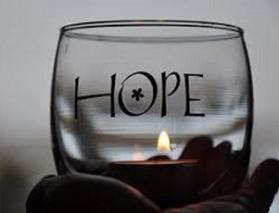One of my favorite things to do is plan a new course, especially when I’m planning it with a friend and colleague from another discipline with whom I’ll be teaching the course in the near future. I’m currently designing a colloquium called “Faith and Doubt” with a thirty-something friend and colleague from the Political Science department—who also happens to be a Dominican priest. We’re still in the early stages of planning the colloquium, which we will teach for the first time in the Spring 2022 semester. But we already know how we will begin the first day of class.
Although my colleague usually teaches in regular clothes rather than his priestly regalia, on the first day of class he will be fully decked out in Dominican garb, including a blindingly white robe, a belt that also serves as a rosary, and so on. I will dress as I would if I was trick-or-treating on Halloween as a 20th century existentialist. Black shirt, black pants—black everything, including a black beret if I can get my hands on one. Once the students have processed the visual, I will say I’m faith, and he’s doubt.
This is going to be fun. My colleague and I have not yet seriously started constructing the syllabus (we need to get on that soon), but we know that Kierkegaard, Montaigne, Pascal, Shakespeare, Weil, Bonhoeffer, Arendt and Hume will all be on there. Over the years, I have made a point of regularly engaging my studentswith the various ways in which faith and doubt compliment and inform each other.
There’s nothing like unexpectedly dropping an f-bomb on a bunch of students. But it’s even better when one of them does it. I teach at a Catholic college, so one would think that the students would be used to talking about the f-word—we Baptists certainly were when I was growing up. But dropping an f-bomb in class, even when the context is entirely appropriate and the word is germane, is like farting in church. Everyone clams up, an uncomfortable atmosphere fills the room, and no one wants to deal with it. And I am presented with, as professors like to say, a “teachable moment.”
Mark Twain once defined “faith” as “believing something you know ain’t true.” I find that my largely parochial school educated students tend to think of faith in this way. They think that faith is opposed to reason, to logic, to evidence, yet is the foundation of what they have been told are the most important truths imaginable. They believe that things believed on the basis of faith are certain and beyond question; I’m reminded of the bumper sticker on a number of vehicles in the church parking lot of my youth: “God Said It, I Believe It, That Settles It.”

But in my estimation just about all of the above “facts” about faith are false. I agree with Anne Lamott when she writes that the opposite of faith is not doubt—the opposite of faith is certainty. But that’s not something I can just drop early into a conversation about the f-word. I have to build up to it.
A good place to start is with another excellent insight from Anne Lamott—faith is a verb, not a noun. It’s an activity, not a thing. So what exactly are we doing when we are “faithing”? I use a good technique that I learned in grammar school—use the word in context. “Somebody use the word “faith” in a sentence that has absolutely nothing to do with religion, church, or God.”
This is a challenge for many of my students, but pretty soon someone says something like “I have faith that the chair I am sitting in will not collapse.” Or “I have faith that the Patriots will win the Super Bowl again this year.” I contribute that “I have faith that when the time comes, my friend John will make the right decision.” All of these sentences are still treating faith as a noun rather than a verb, as something you have rather than something you do, but progress is being made.
“Do you know that the chair isn’t going to collapse?” I ask. “Are you certain that the Red Sox will make the playofffs?” “Well . . .no.” So you’re just guessing? In both cases, the answer there is “no” as well. Apparently, faithing is an activity that occupies the vast territory between certainty and guesswork—the knowledge territory in which we human beings spend a great deal of our time.
Although my student can’t prove that her chair won’t collapse in the next minute, she can refer to past experience to support her faith claim—she’s seen human beings in thousands of such chair situations in her life and has never seen a chair-fail yet. Red Sox fans can point to their team’s excellent first half of the season (although they aren’t currently playing well), and so on. Similarly, my faith in my friend John is not blind—I’m convinced that the phrase “blind faith” is an oxymoron—but rather is based on years of observing his careful consideration of important alternatives before making a decision. When removed from the confines of religion, faithing turns out to be a perfectly natural activity—the activity of moving past evidence in hand toward a conclusion for which there is not complete evidence. Faith is the activity of inching past probability toward something stronger (although the goal is never certainty).
With this in hand, we move to my go-to definition of faith: Faith is the substance of things hoped for, the evidence of things not seen. My Catholic students who are largely ignorant of what the Bible contains are often surprised to find out that this is from the New Testament book of Hebrews, the first verse of Hebrews 11, which is sometimes called “the honor roll of faith.” They are even more surprised to find that the definition says nothing about God, religion, heaven, hell, or any of the other accompanying items they are used to seeing in the entourage of a definition of faith.
Instead, it is an excellent summary of what we have been discussing about faithing as a normal human activity. We faith when we want to provide substance to something important that we are hoping for (the chair will hold me up, the Red Sox will make the playoffs, my friend will make a good decision). All of the items hoped for are “unseen” because they either have not happened yet or cannot be proven true with certainty. Faithing fills in the gaps between evidence and what we hope for, realizing that further evidence over time may force us to adjust our hopes or discard them altogether.
In one of his many extant letters, Rene Descartes tells the story of a king who refused to eat anything unless he could be convinced with certainty that it was not poisoned. And he starved to death. Some things—most things—cannot be established with certainty. Often, we just need to faith our way along. Faith in the realm of things divine is a case in point. I cannot know with certainty anything about God or even that God exists. But this does not mean that faith requires me to blindly guess or shut down my brain. I can point to any number of past and present experiences that I count as evidence from which to take a faith leap in the direction of the divine, all the time knowing that this “evidence” may not be convincing to someone else.
As I wrote in a Facebook discussion a while ago, “Faith is not belief without evidence. Faith is belief when evidence may point in a particular direction but is not complete or exhaustive. Belief entirely without any evidence at all is simply foolishness. That foolishness is not confined to religious activities–it is rampant in politics or any other arena of belief. Non-theists are just as capable of such foolishness as theists are.” Faith in the spiritual realm involves applying the very common human activity of believing on the basis of important but partial evidence to the realm of the relationship between human and divine. I can’t prove it, but neither am I guessing.













